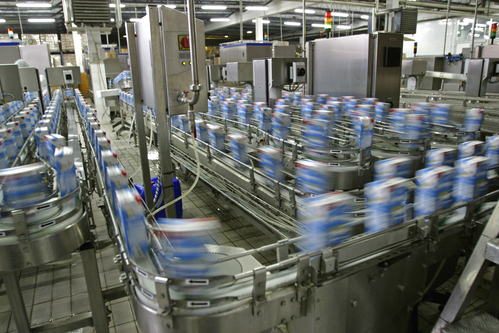
THE HYGIENIC DESIGN ENCLOSURE AS THE BEST SOLUTION FOR THE FOOD INDUSTRY
The food industry is an atypical branch of the industry because its task is to produce food. Thus, the production companies in this sector must meet restrictive requirements. Employees must satisfy imposed requirements (including health related), the equipment must have proper parameters and the requirements related to OHS are more stringent. The same applies to enclosures used in the food industry. They must be tight and properly prepared in order to use them wherever food is produced.
How to select an enclosure for food industry?
You need to remember that any and all machines and devices operating within the food industry should enable fast cleaning. The Hygienic Design enclosures are the best solution. These are designs dedicated to food industry. This results mostly from the construction and materials that facilitate cleaning and preclude formation of contamination. As mentioned, the cleaning time should be as short as possible. This is important because it enables reduction of production standstills that may cause losses for the company.
Standards concerning production of food and beverages
As mentioned before, production of food and beverages requires satisfaction of regulations by the producers. These are conditioned by both commune and international law. This is to standardize and introduce the same regulations within all countries. Therefore, it is possible to level the requirements for all producers and this in turn positively affects competitiveness on the international market. There even is an association that is to promote the Hygienic Design solutions. It gathers companies supplying the food industry, entities processing food and other responsible for public health and industry hygiene. The purpose of these operations is to ensure high quality and safe food products.
What is the difference between the Hygienic Design and standard enclosure?
Of course, the first item that differentiates these two is the aforementioned cleaning ease. The key to the success in this case is adequate design based on:
– avoidance of blind spaces,
– crossing the gaps that precludes formation of free spaces,
– design that eliminates any gaps where bacteria could accumulate,
– eliminating surfaces with dents in the form for nuts, screws, etc.,
– equipping the enclosure with skew surfaces that preclude accumulation of water,
– compact design,
– angled top surface of the enclosure that precludes placement of objects on it,
– compact structure that enables clamping guaranteeing tightness.
An important thing that differentiates the Hygienic Design enclosures from other enclosures is the construction material. These are made of stainless (or acid resistant) steel. Therefore, when exposed to harmful production environment, they do not degrade as fast and are easier to maintain.
Why the stainless (or acid resistant) steel is the best material for enclosure construction in the food industry?
The basic feature that distinguishes stainless steel enclosures from other ones is the fact that they do not corrode*. Only this feature significantly improves cleanliness. Moreover, stainless steel is much easier to maintain and facilitates accurate cleaning. The food industry enclosures made of stainless steel are also resistant to severe production conditions, e.g. sea water, etc. This means that they are also less endangered by cleaning agents used for cleaning in order to keep the adequate level of hygiene. Thus, under such conditions, enclosures made of stainless steel will be better suited.
Additional features of the enclosure being the key to keeping the high hygiene level
The Hygienic Design cabinets and enclosures for food industry must also be equipped with proper sealing. Usually, proper gaskets that preclude formation of gaps are used. Presence of gaskets does not affect the maintenance of the enclosure in any way and ensures that these operations are performed quickly and accurately. Moreover, any enclosures used in the food industry should be shock-resistant. They are often positioned close to operating elements. A stroke may lead to loss of tightness, fault of a machine or simply accumulation of dirt in the defective place. Another method guaranteeing tightness is properly closed door that is selected according to the size of the enclosure. Depending on its dimensions, it can be equipped with one or a few locks. The enclosures may be equipped with tight cable glands with smooth surface and compact design. This is a common solution applied in the pharmaceutical, food and brewery industry.
*For the purposes of the paper, a common term is used and the matter related to stainless and acid resistant steel corrosion was omitted. You should be aware that all these materials are susceptible to corrosion under specified conditions, however this process takes place differently and slower than in case of other grades of steel.


 en
en  PL
PL  DE
DE  LT
LT  SV
SV  FR
FR  ES
ES  HU
HU  NO
NO  DK
DK  FI
FI  RU
RU 